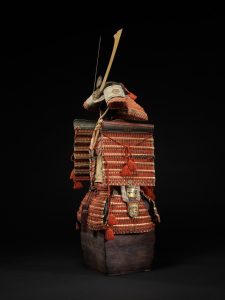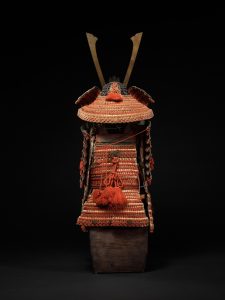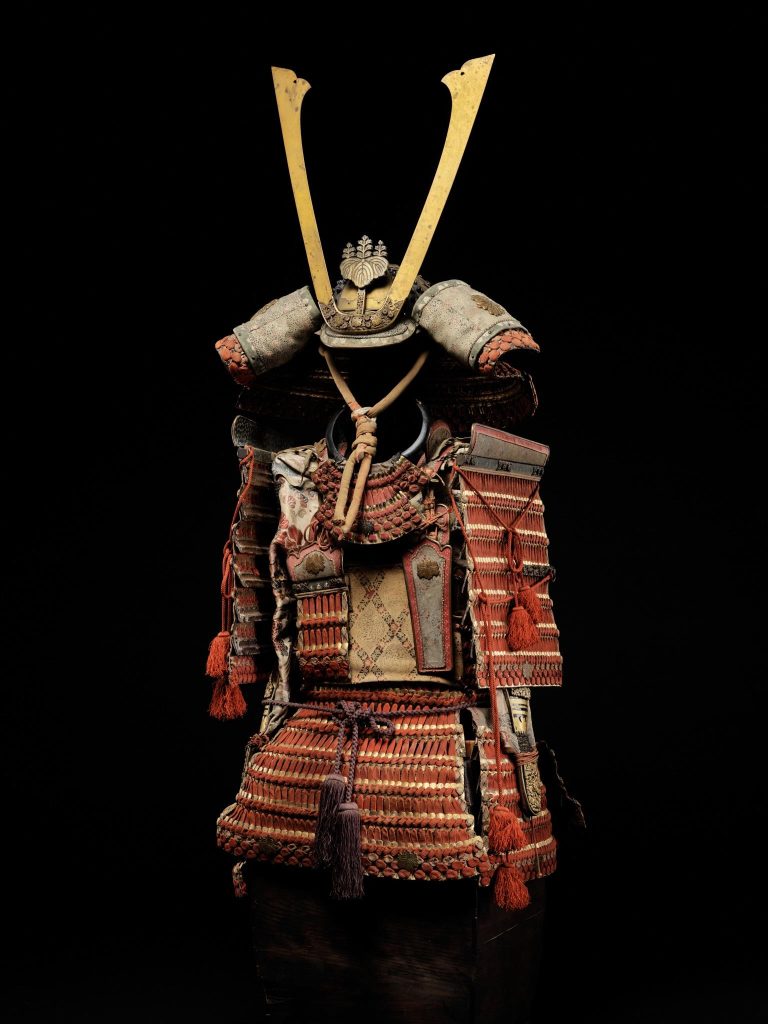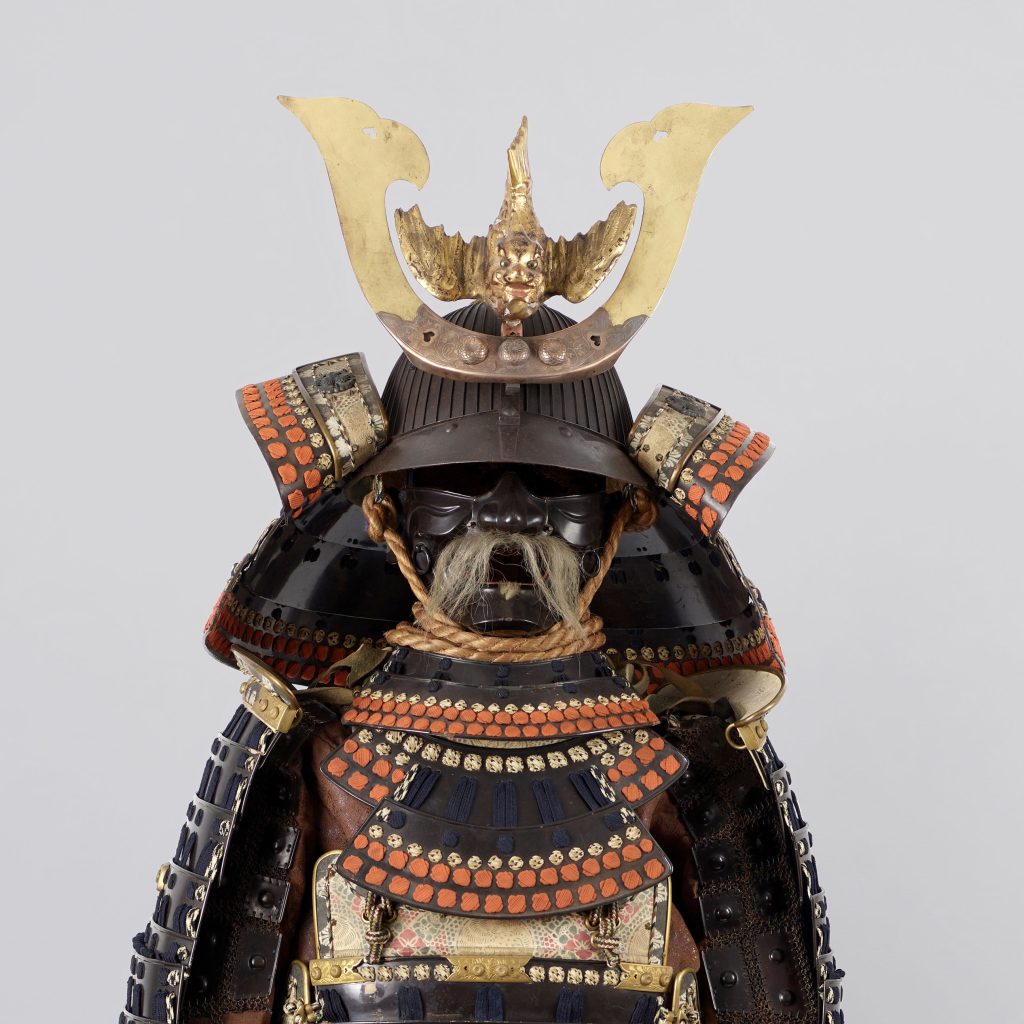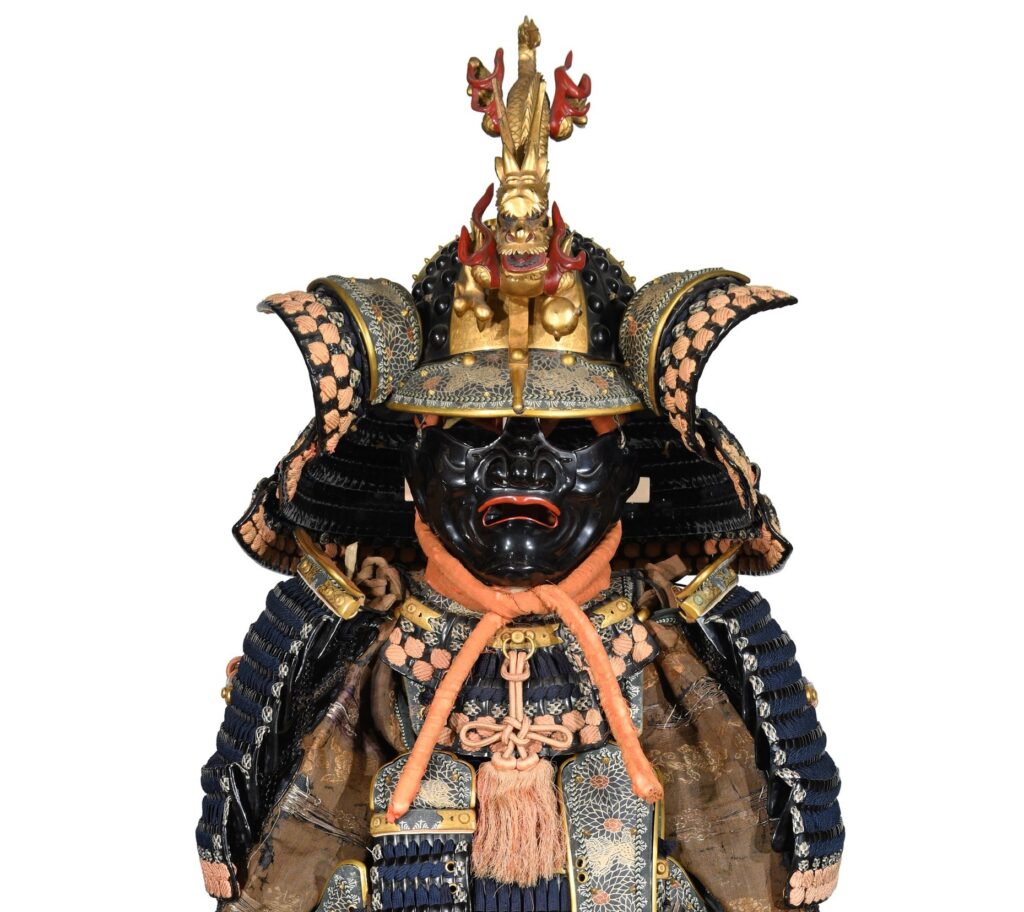Myōchin Ki Munenao
O-Yoroi with Go-shichi no Kiri
Late Edo period, 1848-1854
Signed kabuto and "Kao" on a gilt plate on the outside
An important O-Yoroi, made for the imperial family which can be recognized by the Kirimon-wisteria 7-5-7 leaves on the helmet and other places. The armor smith, Myōchin Ki Munenao, worked in the late Edo period, Kaei period 1848-1854.
The armor is made of light gold lacquered honkozane and laced in orange and red in the Omodaka Odoshi style. The individual parts are decorated with ornately stenciled deerskin and chrysanthemum scroll fittings of gilded copper.
The helmet is a rust-red, twelve-panel o-boshi kabuto, dressed in karajiho and shinodare of gilt copper, descending from a large two-tiered tehen kanamono of gilt copper and decorated on the sides with three coats of arms of the imperial family in gilt copper. On the reverse, the bowl is signed “Myochin Munenao” and “Kao” on a gilt plate on the outside.It is decorated with a broad five-armed O-manju shikoro with broad fukigaeshi in the Heian style with silk cord accents and with gilded copper imperial crests, the mabizashi Similarly decorated and applied with a strong shishi kuwagatai of gilded copper bearing the long classical kuwagata.
The O-Yoroi style cuirass opens on the right side and features a waidate plate, four wide sections of five-ply kusazuri separated front and back in typical Yoroi style; kyubi no ita; osode; namazugote with shakudo and gilded copper plates, with gilded copper fittings, carved with a chrysanthemum scroll and butterfly, the chainmail painted black.
Supplied with a yoroi-tate [armor display stand] and yoroi-bitsu [armor travel storage box].
Provenance:
Private collection, Japan
Private collection, Czech Republic
Private collection, Zurich, Switzerland
